Eriophyllum lanosum, White Woolly Daisy
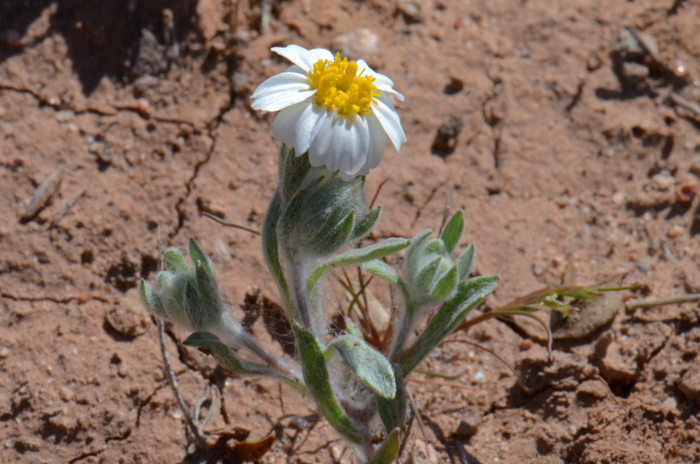
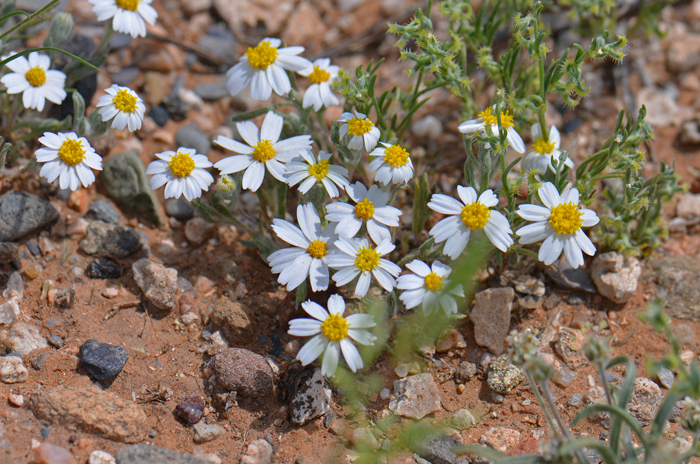
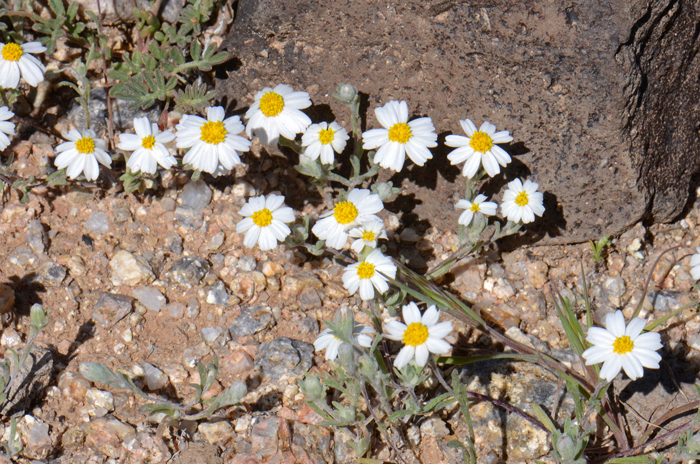
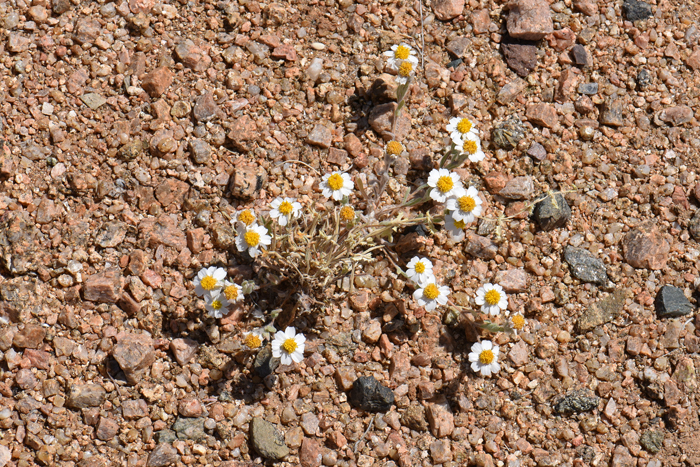
Scientific Name: Eriophyllum lanosum
Common Name: White Woolly Daisy
Also Called: White Easterbonnets, White Easter-bonnets, Whoolly Daisy, Wooly Eriophyllum
Family: Asteraceae, Sunflower Family
Synonyms: (Actinolepis lanosa, Antheropeas lanosum, Burrielia lanosa)
Status: Native
Duration: Annual
Size: 2 to 6 inches (5-15 cm)
Growth Form: Forb/herb; plants woolly, covered with tufts of long, tangled hairs; generally small, branches horizontal but turned upward at the tips; (decumbent) spreading horizontally then becoming erect (ascending); plants often reddish colored.
Leaves: Pale green; small and without a stalk (sessile); leaves generally linear to oblanceolate; leaves sparsely woolly.
Flower Color: White with yellow center - white outer flowers may show red veins; flower heads are one (solitary) per plant on a slender woolly flowering stalk (a peduncle); flower heads with both ray (8 to 10) and disk (10-20) florets; fruit is a cypsela with a pappus of slender awns.
Flowering Season: February, March, April and May
Elevation: 200 to 3,000 feet (61-914 m)
Habitat Preferences: Common in dry, gravelly mesas and slopes, sunny sandy areas, desert scrub.
Recorded Range: White Woolly Daisy is found in the southwestern United States in AZ, CA, NM, NV and UT. It is also native to Baja California and northwest Mexico in Baja California and Sonora.
Populations in the United States are primarily in AZ, CA and NV; also occurs in the extreme southwest corners of southwest UT and NM.
North America & US County Distribution Map for Eriophyllum lanosum (as Antheropeas lanosum).
North America species range map for White Woolly Daisy, Eriophyllum lanosum:
North American range map courtesy of Virginia Tech, Dept. of Forest Resources & Environmental Conservation
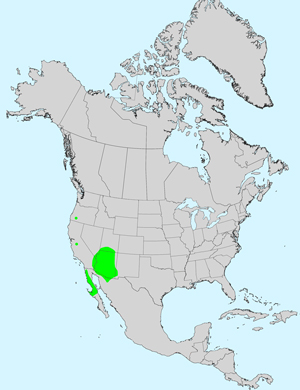
U.S. Weed Information: Unknown
Invasive/Noxious Weed Information: Unknown
Wetland Indicator: Unknown
Threatened/Endangered Information: Unknown
Genus Information:In North America there are 12 species and 12 accepted taxa overall for Eriophyllum (includes genus Antheropeas as a synonym). Worldwide, The Plant List includes 13 accepted species names and a further 52 of infraspecific rank for the genus.
The genus Eriophyllum was published by Mariano Lagasca y Segura in 1816.In the Southwestern United States: Arizona has 5 species of genus, California has 13 species, Nevada has 5 species, New Mexico has 1 species, Texas has 0 species, Utah has 3 species. Statistics include genus Antheropeas as a synonym. All data is approximate and subject to taxonomic changes.
Comments: White Easterbonnets or Woolly Daisy is an early spring bloomer and a common plant where it is found. It is more closely aligned with the confines of the Mojave Desert where its populations are greatest. It is a plant with the stems, leaves and flowers covered with fine white wholly hairs, often looking like a spider web. Because of this tan herbage covering, plants have a tendency to blend in with the surrounding desert gravel and sand.
White Woolly Daisy superficially resembles Whitedaisy Tidytips, Layia glandulosa, Daisy Desertstar, Monoptilon bellidiforme and Mojave Desertstar, Monoptilon bellioides.
In Southwest Desert Flora also see; Pringle's Wooly Sunflower, Eriophyllum pringlei and Wallace Eriophyllum, Eriophyllum wallacei.
The genus Eriophyllum was published by Mariano Lagasca y Segura in 1816.
The species epithet “lanosum” (lano'sa/lano'sum:) means woolly, also a reference to the woolly hairs that cover the plant.

